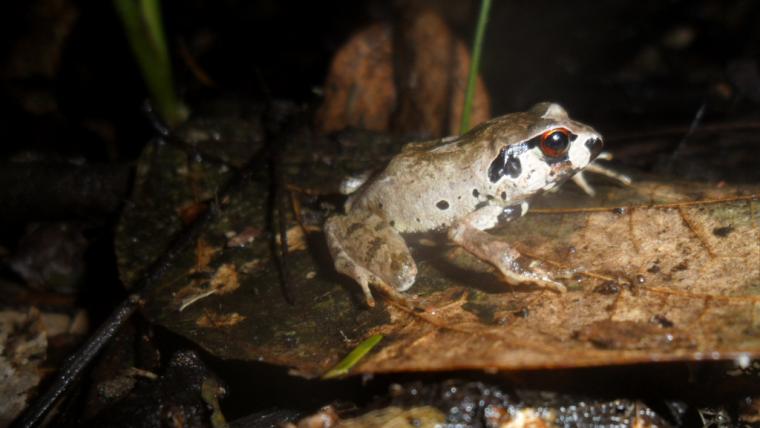
How a former frog hunter became the leading conservationist for Ghana’s amphibians
The giant squeaker frog settles down on the moist earth of Ghana’s Sui River Forest Reserve, and lets out a high-pitched yelp. This species was once thought to be extinct. But in 2009, conservationist Gilbert Adum rediscovered the amphibian here. This animal is endemic to the region, which is threatened by illegal mining and logging. Luckily, the giant squeaker has Adum on its side. He’s the hero of frog conservation in Ghana.
Born to a hunting tribe in northern Ghana, Adum would often eat frogs as a delicacy as is tradition in the country. But when he learnt that these creatures were going extinct, he decided to take a stand for their survival and launched Save Ghana Frogs. This organisation’s conservation work is of critical importance. Since 1980, over 200 species of frogs have vanished from the planet. This is as a result of pollution, viruses, killer fungi, and rampant habitat loss – the greatest threat to frogs in Ghana.
With each tree that disappears, Adum ensures new seedlings are planted. Together with his team and local communities living near at-risk areas, he’s planted over 40 000 trees. Adum also provides people with employment opportunities such as beekeeping so that they do not have to turn to logging. “I am very proud of the work I am doing,” he says. Adum educates youth in schools too, printing field guides and hosting trips to conservation sites such as the Sui River Forest Reserve. Since his initial finding of the giant squeaker frog, less than 10 others have been recorded. But with ongoing research, Adum is confident that the species will endure. “No frog will be allowed to go extinct under my watch,” he says.
Adum’s conviction and efforts have not gone unnoticed. In 2016, he received the Whitley Award for his contributions to conservation, and funding to help develop alternative livelihoods for Ghana’s locals. The survival of humanity depends on the success of our ecosystems, to which rainforests are imperative. We must protect these precious habitats and the frogs who live in them. One small step for amphibians is a giant leap for every living species.
Footage and photos by Save the Frogs! was used in the creation of this film.






























Please sign in to leave a comment